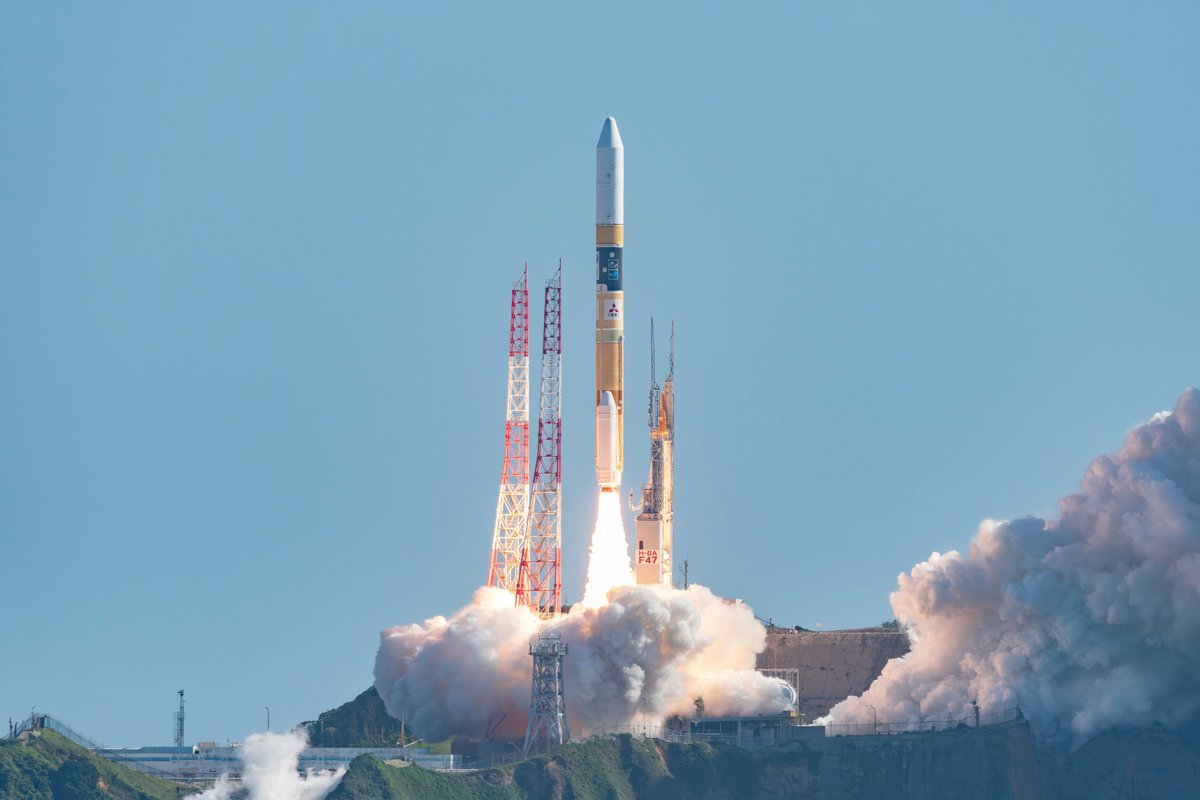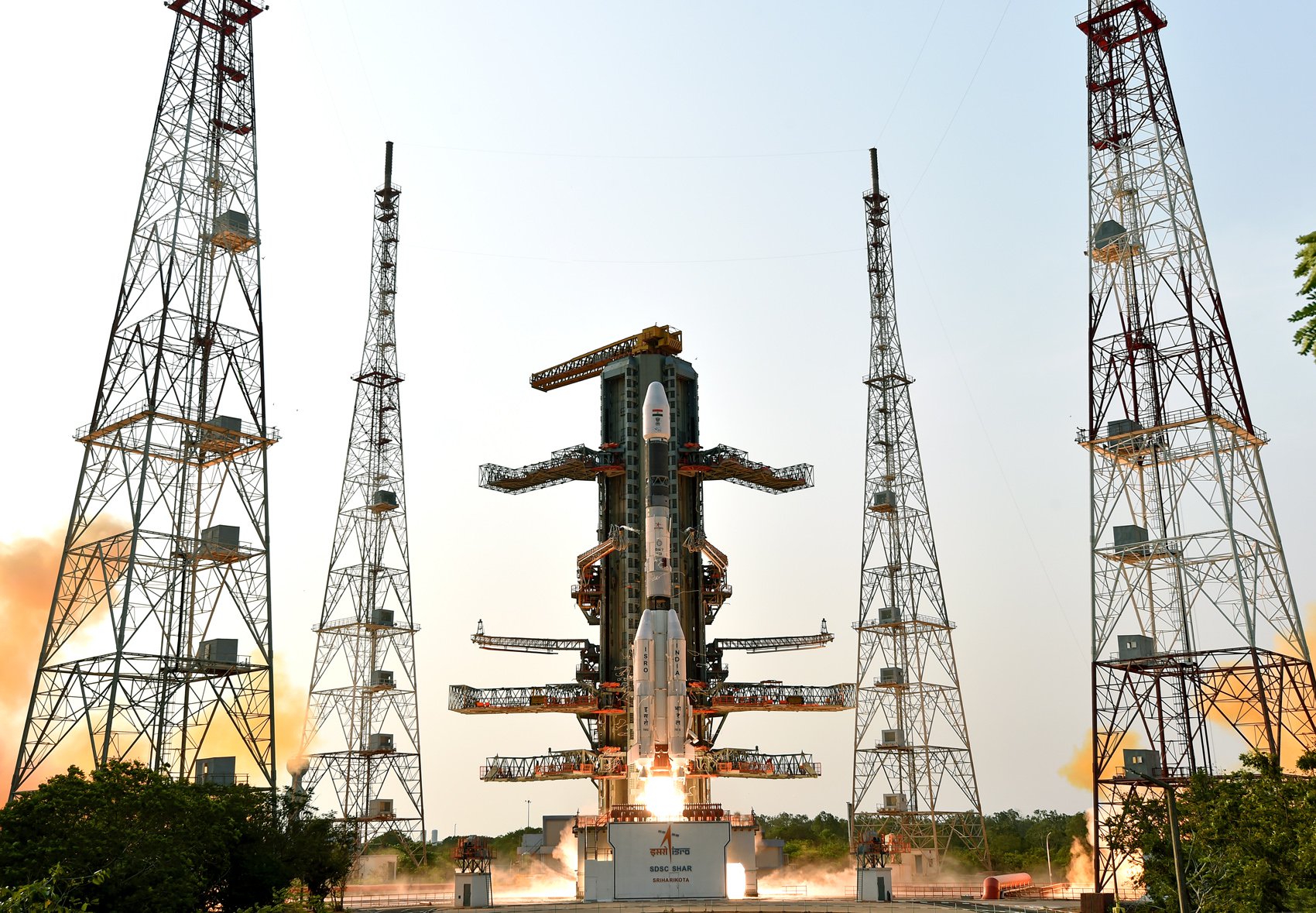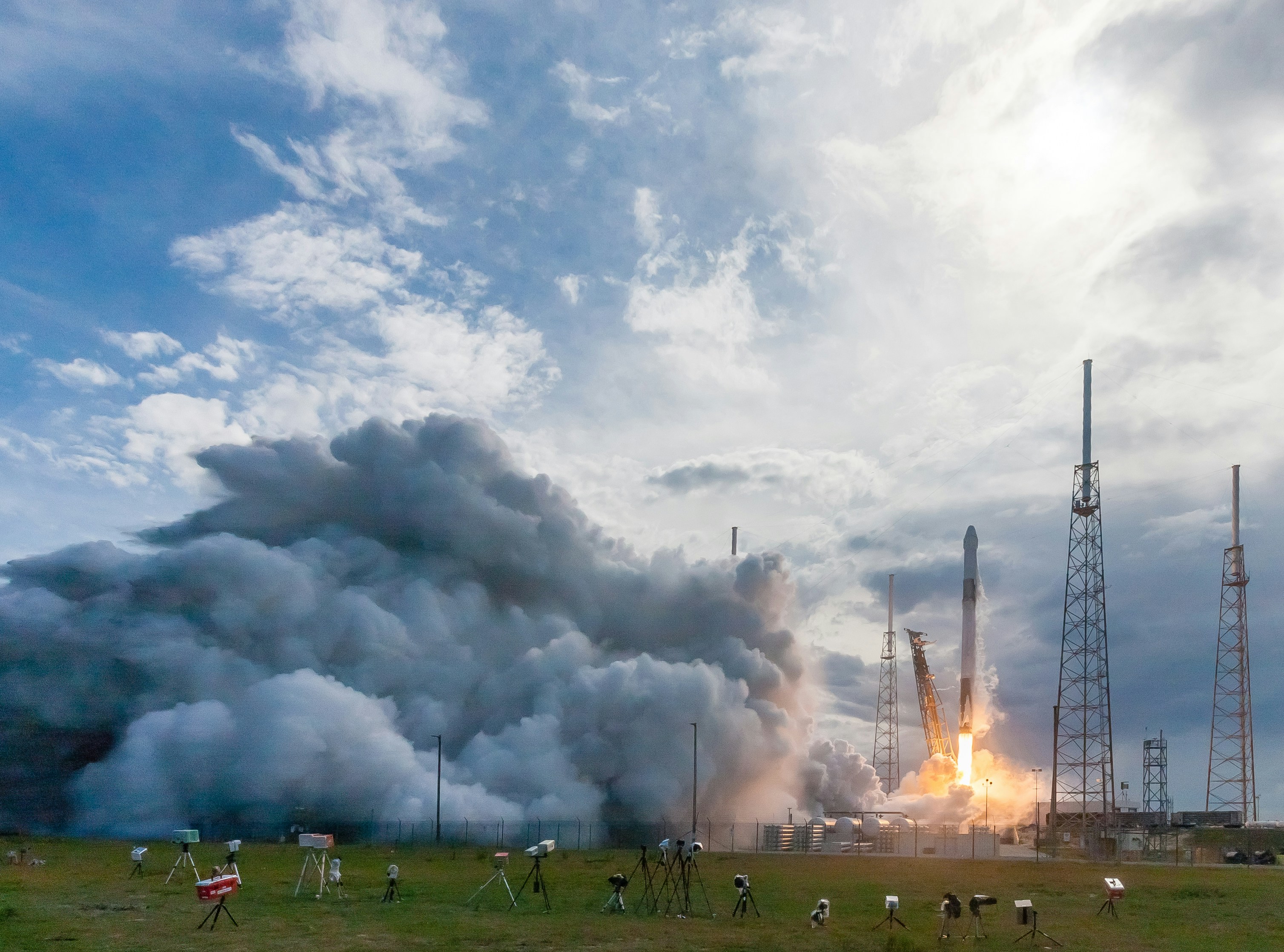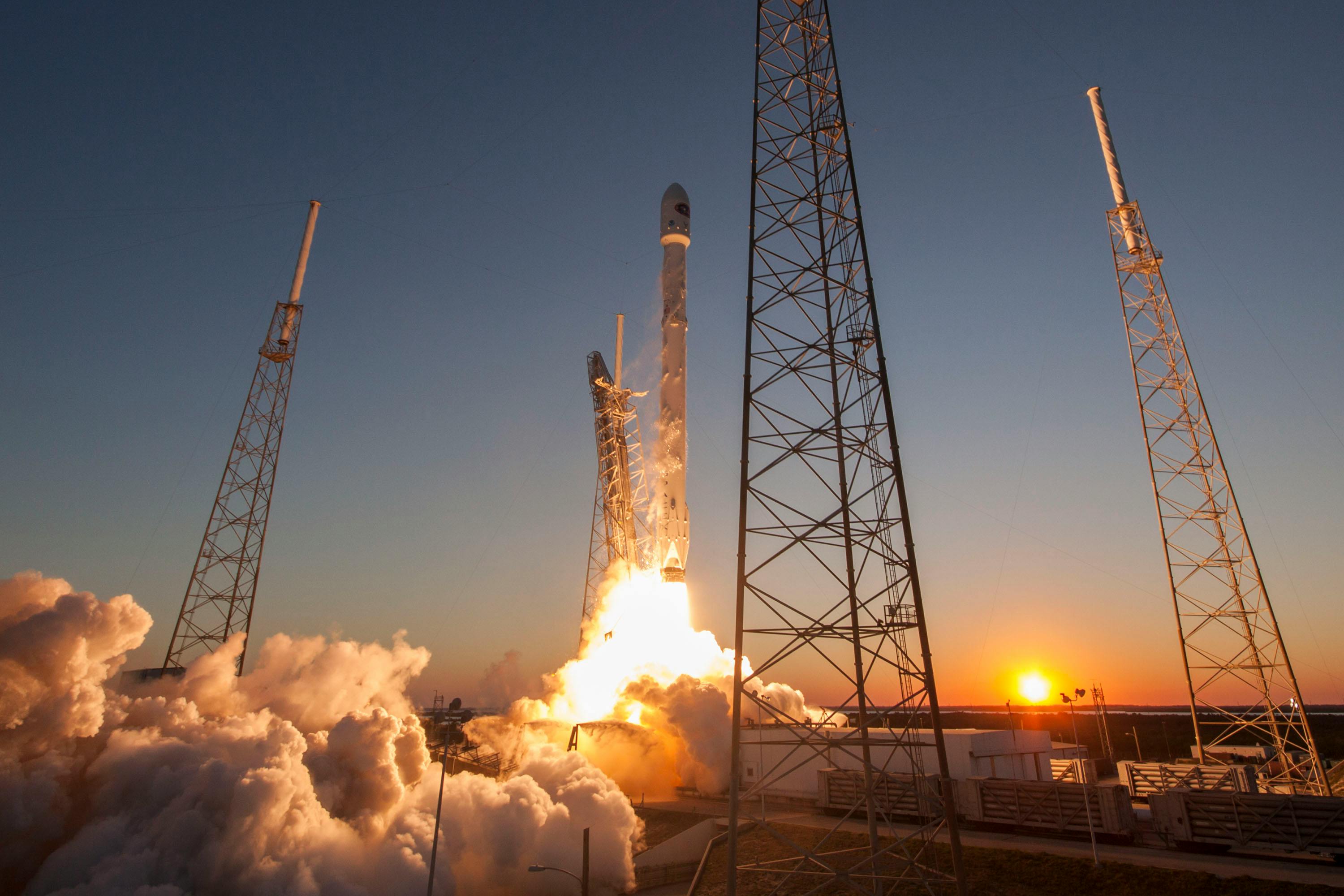· space brief · 6 min read
Space Brief 23 Jun 2025
Significant advancements and launches in space: NASA's hypersonic sensor breakthrough, ChinaSat-9C's launch, and SpaceX's resilient Falcon 9 operations.

📄Top Stories
NASA prepares for the inaugural hypersonic test flights of the innovative Fiber Optic Sensing System, aiming to advance hypersonic vehicle research. Meanwhile, China’s launch of the ChinaSat-9C satellite continues to enhance their broadcasting capabilities following its successful deployment. Despite a setback with its Starship program, SpaceX reassures that Falcon 9’s launch schedule remains unaffected.
📰Detailed Coverage
NASA’s Hypersonic Sensor Breakthrough
NASA’s Armstrong Flight Research Center is set to make strides in hypersonic research with the launch of its Fiber Optic Sensing System (FOSS). Designed to accurately measure temperature and strain, this compact system is integral to a series of hypersonic rocket tests slated for summer 2025. This innovation promises to enhance the performance and reliability of high-speed aerospace vehicles.
The FOSS technology represents a milestone for NASA’s aeronautics research, offering lightweight, efficient solutions for real-time data acquisition crucial for hypersonic operations. These tests are pivotal in understanding the complex dynamics of hypersonic travel and improving vehicle designs, reinforcing the importance of advanced monitoring systems in aerospace development.
Read the full story: Space Daily
China Launches ChinaSat-9C
China successfully launched the ChinaSat-9C satellite using a Long March 3B rocket from the Xichang Satellite Launch Center. This new geostationary communications satellite is designed to replace an older model and enhance China’s broadcasting capabilities, reflecting the country’s commitment to advancing its satellite infrastructure.
By augmenting domestic communication networks, the ChinaSat-9C supports a diverse array of services such as television broadcasting and data transmission. This launch underscores China’s growing presence in space technology and its strategic focus on expanding domestic satellite communications.
Read the full story: Space News
SpaceX’s Resilient Falcon 9 Schedule
Following a recent explosion of its Starship prototype, SpaceX has announced that the Falcon 9 launch schedule will remain operationally robust. The incident involved the complete loss of Ship 36 but SpaceX reassures that its Falcon 9 campaigns, crucial for deploying satellites and providing ISS supplies, will not face disruptions.
The Falcon 9’s continued readiness underscores SpaceX’s commitment to maintaining a reliable launch schedule despite developmental setbacks with Starship. This resiliency is pivotal for satellite deployment and maintaining projects relying on consistent access to orbit.
Read the full story: Space Explored
Isaacman Eyes Privately Funded Science Missions
Jared Isaacman, once considered for NASA administration, is exploring private funding opportunities for science missions. His interests reflect a growing trend of private investment in space research, potentially accelerating scientific endeavors outside traditional government channels.
Private funding in space science could substantially increase the pace of discovery and innovation by leveraging commercial efficiencies. Isaacman’s initiative might lead to cooperative models between private and public sectors, offering new avenues for scientific exploration and technology development.
Read the full story: Space News
ULA Testing OpenAI’s Government-Compliant Chatbot
ULA has begun piloting ‘RocketGPT’, an advanced chatbot tailored for the aerospace sector and developed with OpenAI. This collaboration aims to create artificially intelligent systems that adhere to stringent government data security requirements, enhancing operational efficiencies across sensitive space activities.
The introduction of RocketGPT is indicative of the increasing intersection between AI and aerospace, providing innovative solutions to manage vast datasets effectively while ensuring compliance with governmental standards. As this technology evolves, it could play a vital role in the management and analysis of satellite data.
Read the full story: Space News
Vera Rubin Observatory Releases First Images
The Vera Rubin Observatory, a colossal endeavor over two decades in the making, has unveiled its first breathtaking images of celestial phenomena. Situated in Chile, the observatory provides unprecedented clarity in observing distant galaxies thanks to its prime location and cutting-edge design.
These first images attest to the observatory’s potential to revolutionize our understanding of the universe. Although mainly focused on deep-space observation, developments and data from these types of projects often feed into satellite tracking and astronomical research initiatives.
Read the full story: Space Daily
🛰️Satellite Spotlight
- Satellite Name: FALCON EYE 2
- NORAD ID: 47226
- Launch Date: December 2, 2020
- Mission: Optical reconnaissance for surveillance purposes.
- Orbit: LEO (Low Earth Orbit)
- Operator: UAEAF (United Arab Emirates Armed Forces)
- Fun Fact: This satellite is part of the Emirates’ initiative to enhance its reconnaissance capabilities and bolster national security.
Track this satellite in real-time on our web app: Track FALCON EYE 2
🌌Space Weather
Space weather conditions are currently quiet.
Current
R0 - S0 - G0
Last 24 Hour Maximums
R0 - S0 - G0
Recent Alerts
- Geomagnetic Storm Watch: A G1 (Minor) geomagnetic storm is predicted on June 25, with no anticipated storm levels on June 23-24.
- Impacts: Weak power grid fluctuations and minor impacts on satellite operations may occur. Aurora visibility could extend to northern regions of the U.S., including northern Michigan and Maine.
Next 24 Hours
-
Radio Blackouts Probability
- Minor: 45
- Major: 10
- Risk: None
-
Solar Radiation
- Probability: 10
- Risk: None
-
Geomagnetic Storming
- Scale: 0
- Impact: none
- Activity: Low
-
Impact Summary
- No risk of radio blackouts and solar radiation storms.
- Likely geomagnetic activity at G1 (Minor) levels on June 25, with potential minor solar radiation storms from June 23-25 due to eruptive activity.
Long Term Forecast
- Forecast of Solar and Geomagnetic Activity (June 23 - July 19, 2025):
- Solar activity expected to range from low to moderate.
- Chance for R1-R2 (Minor-Moderate) radio blackouts and slight chance for R3 (Strong) events through July 18.
- High electron flux expected at geosynchronous orbit on June 26-28.
- Geomagnetic activity likely to reach G1 (Minor) storm levels on June 25-26 and active levels on multiple dates in early July, primarily due to recurrent CH HSS influences.
- Quiet to unsettled conditions are expected for the remainder of the period.
🚀Upcoming Space Launches
June 23
- United Launch Alliance Atlas V 551:
- Project Kuiper (KA-02) from Cape Canaveral SFS, FL, USA (10:54 UTC) Project Kuiper is a mega constellation of satellites in Low Earth Orbit that will offer broadband internet access, managed by Kuiper Systems LLC, a subsidiary of Amazon.
- SpaceX Falcon 9 Block 5:
- Transporter 14 (Dedicated SSO Rideshare) from Vandenberg SFB, CA, USA (21:18 UTC) Dedicated rideshare flight to a sun-synchronous orbit with dozens of small microsatellites and nanosatellites for commercial and government customers.
June 24
- Rocket Lab Electron:
- Symphony In The Stars from Rocket Lab Launch Complex 1, Mahia Peninsula, New Zealand (07:00 UTC) ‘Symphony In The Stars’ is a dedicated mission to deploy a single spacecraft to a 650km circular Earth orbit, potentially an EchoStar Lyra Block 1 S-band IoT communication satellite.
June 25
- SpaceX Falcon 9 Block 5:
- Starlink Group 10-16 from Cape Canaveral SFS, FL, USA (16:33 UTC) A batch of satellites for the Starlink mega-constellation, SpaceX’s project for a space-based Internet communication system.
June 27
- SpaceX Falcon 9 Block 5:
- Starlink Group 10-34 from Cape Canaveral SFS, FL, USA (04:48 UTC) A batch of satellites for the Starlink mega-constellation, SpaceX’s project for a space-based Internet communication system.
June 28
- SpaceX Falcon 9 Block 5:
- Starlink Group 15-7 from Vandenberg SFB, CA, USA (16:43 UTC) A batch of satellites for the Starlink mega-constellation, SpaceX’s project for a space-based Internet communication system.
June 30
- Rocket Lab Electron:
- 6x HawkEye 360 from Wallops Flight Facility, Virginia, USA (00:00 UTC) HawkEye 360 is a space-based civil global intelligence satellite network using radio frequency technology to monitor transportation and provide civil SIGINT.
- SpaceX Falcon 9 Block 5:
- Axiom Space Mission 4 from Kennedy Space Center, FL, USA (00:00 UTC) This mission will carry a professionally trained commander and three private astronauts to the International Space Station, staying for at least eight days.
- Japan Aerospace Exploration Agency H-IIA 202:
- GOSAT-GW from Tanegashima Space Center, Japan (00:00 UTC) GOSAT-GW is JAXA’s satellite for monitoring greenhouse gases and water-cycle observation, contributing to climate change prediction and disaster prevention.
Note: Launch dates and times are subject to change due to technical or weather considerations.

Maurice Stellarski





